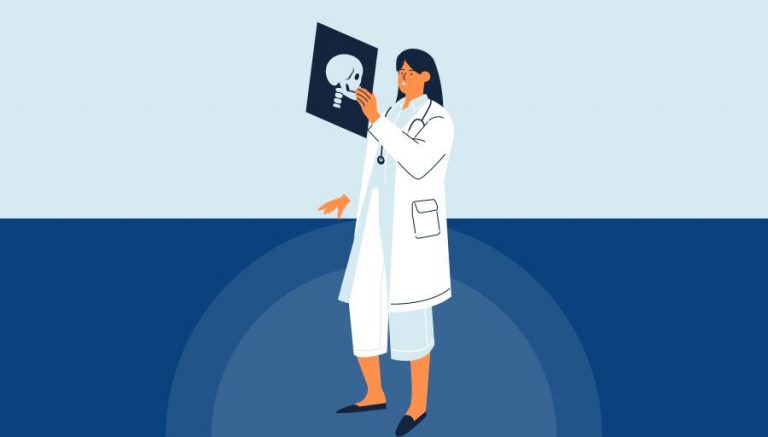How To Use CPT Code 87449
CPT 87449 describes the detection of infectious agent antigens using immunoassay techniques. This article will cover the description, procedure, qualifying circumstances, appropriate usage, documentation requirements, billing guidelines, historical information, similar codes and billing examples.
1. What is CPT Code 87449?
CPT 87449 can be used to detect infectious agent antigens using immunoassay techniques. This code is used when a lab analyst performs a test to assess the presence of antigens of an unlisted organism, such as a virus, bacterium, fungus, or protozoan, using methods like enzyme immunoassay (EIA), enzyme-linked immunosorbent assay (ELISA), fluorescence immunoassay (FIA), or immunochemiluminometric assay (IMCA).
2. Official Description
The official description of CPT code 87449 is: ‘Infectious agent antigen detection by immunoassay technique (eg, EIA, ELISA, FIA, IMCA), qualitative or semiquantitative; not otherwise specified, each organism.’
3. Procedure
- The lab analyst performs an immunoassay technique, such as EIA or ELISA, to detect antigens of an unlisted organism in a primary source specimen from the patient.
- The analyst follows all technical steps to assess the presence of specific protein particles on the unlisted organism.
- The test may utilize methods like EIA, ELISA, FIA, or IMCA to detect the antigens.
- The presence of antigens indicates a possible infection with the unlisted organism.
- The test is typically performed on patients with suspected infections caused by organisms not listed in more specific codes.
4. Qualifying circumstances
CPT 87449 is used when testing for infectious agent antigens of an unlisted organism, such as a virus, bacterium, fungus, or protozoan. The test is performed using immunoassay techniques like EIA, ELISA, FIA, or IMCA. It is typically ordered to diagnose or rule out possible infections with organisms not listed in other codes. The test is performed on primary source specimens, and separate codes should be used for testing culture isolates.
5. When to use CPT code 87449
CPT code 87449 should be used when a lab analyst performs an immunoassay technique to detect infectious agent antigens of an unlisted organism using methods like EIA, ELISA, FIA, or IMCA. This code is appropriate when testing for infections caused by organisms not listed in more specific codes. It should not be used for testing antibodies to an organism, as there are separate codes for that purpose.
6. Documentation requirements
To support a claim for CPT 87449, the following documentation is required:
- Indication of the need for testing for an unlisted organism
- Specific immunoassay technique used (EIA, ELISA, FIA, IMCA)
- Date and time of the test
- Results indicating the presence or absence of infectious agent antigens
- Signature of the lab analyst performing the test
7. Billing guidelines
When billing for CPT 87449, ensure that the test is performed using immunoassay techniques like EIA, ELISA, FIA, or IMCA. The test should be performed on primary source specimens, and separate codes should be used for testing culture isolates. It is important to follow payer-specific guidelines for billing and to use appropriate modifiers if multiple tests are performed for different species or strains of the organism.
8. Historical information
CPT 87449 was added to the Current Procedural Terminology system on January 1, 1998. There have been several updates to the code since its addition, including changes to the description and the addition of multiple-step methods.
9. Examples
- A lab analyst performs an immunoassay technique to detect antigens of an unlisted virus in a patient’s blood sample.
- Using EIA, a lab analyst tests for the presence of antigens of an unlisted bacterium in a patient’s urine sample.
- An immunoassay technique, such as ELISA, is used by a lab analyst to detect antigens of an unlisted fungus in a patient’s respiratory specimen.
- Using FIA, a lab analyst tests for the presence of antigens of an unlisted protozoan in a patient’s stool sample.
- An IMCA is performed by a lab analyst to detect antigens of an unlisted virus in a patient’s cerebrospinal fluid sample.
- A lab analyst uses EIA to test for the presence of antigens of an unlisted bacterium in a patient’s wound swab sample.
- Using ELISA, a lab analyst detects antigens of an unlisted fungus in a patient’s skin scraping sample.
- An immunoassay technique, such as FIA, is used by a lab analyst to detect antigens of an unlisted protozoan in a patient’s vaginal swab sample.
- Using IMCA, a lab analyst tests for the presence of antigens of an unlisted virus in a patient’s throat swab sample.
- A lab analyst performs an EIA to detect antigens of an unlisted bacterium in a patient’s joint fluid sample.


